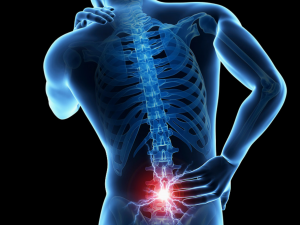POSTERIOR LUMBAR FUSION
A fusion entails the joining, or fusing, of bones with bone grafts to an area of the spine that has movement. Spinal surgeons perform spinal fusions with a goal of tricking the body into thinking it has a fracture, causing the bone between the two grafts to grow.
A board certified spinal surgeon performs a posterior lumbar fusion on the low back to treat instability of the spine. Often instability of the spine occurs due to a fracture, degenerative disc disease, or spine tumors. When a surgeon stabilizes the spine, the stabilization limits movement of the spine. With little to no movement, pain does not occur. Different types of spinal fusions exist and the type depends on the effected vertebrae and the access point used. During a posterior lumbar fusion, the surgeon accesses the spine posteriorly (from the back) and fuses vertebrae of the lumbar portion of the spine.
Purpose of A POSTERIOR LUMBAR FUSION
A surgeon performs a posterior lumbar fusion in order to stop movement of one or more vertebrae. Fusing the affected sections together prevents the sections from moving. Stopping movement should also stop mechanical pain. Mechanical pain occurs when excessive motion between the vertebrae causes inflammation in the damaged discs and joints that connect the vertebrae. The spinal nerves may also get irritated and inflamed from excess vertebral motion.
How surgeons perform a posterior lumbar fusion
Surgeons perform a Posterior Lumbar Fusion under general anesthesia. Under general anesthesia, the patient remains fully asleep for the entirety of the procedure. While asleep, the patient cannot feel anything. The surgeon starts the procedure, making a vertical incision over the spine. The surgeon makes the incision over the lower spine, called the lumbar spine. The surgeon moves the muscles and tissues out of the way in order to access the spinal column. Once the surgeon can clearly see the surgical area, they often use diagnostics in the operating room to confirm the area. Typically, the physician uses a Xray to confirm the area with the preoperative diagnostic testing. The surgeon then performs the posterior lumbar fusion, fusing together multiple vertebrae from the lumbar spine. Typically the entire lumbar fusion takes around two hours but can take longer depending on the amount of vertebrae affected.
Recovering from a posterior lumbar fusion
Following a posterior lumbar fusion, the patient requires extensive physical therapy. Typically, the treating surgeon prescribes an out patient physical therapy program that starts around 6 weeks after surgery. Patients should always follow the protocol given to them from their specific surgeon. Often, each surgeon has their own protocol that they create based off of previous cases and their own technique performed. The delay in rehab ensures the fusion has  taken and the bones have fused together. Physical therapy most likely lasts for two or three months. Each patient has unique healing but most patients can expect a full recovery about 8 months following posterior lumbar fusion.
taken and the bones have fused together. Physical therapy most likely lasts for two or three months. Each patient has unique healing but most patients can expect a full recovery about 8 months following posterior lumbar fusion.
To view a list of all insurances that AOA Orthopedic Specialists accept, click HERE. To schedule an appointment online, click HERE.
EXPERIENCING neck or back PAIN? CALL 817-375-5200 TO SCHEDULE AN APPOINTMENT WITH AN AOA ORTHOPEDIC SPECIALIST TODAY!

